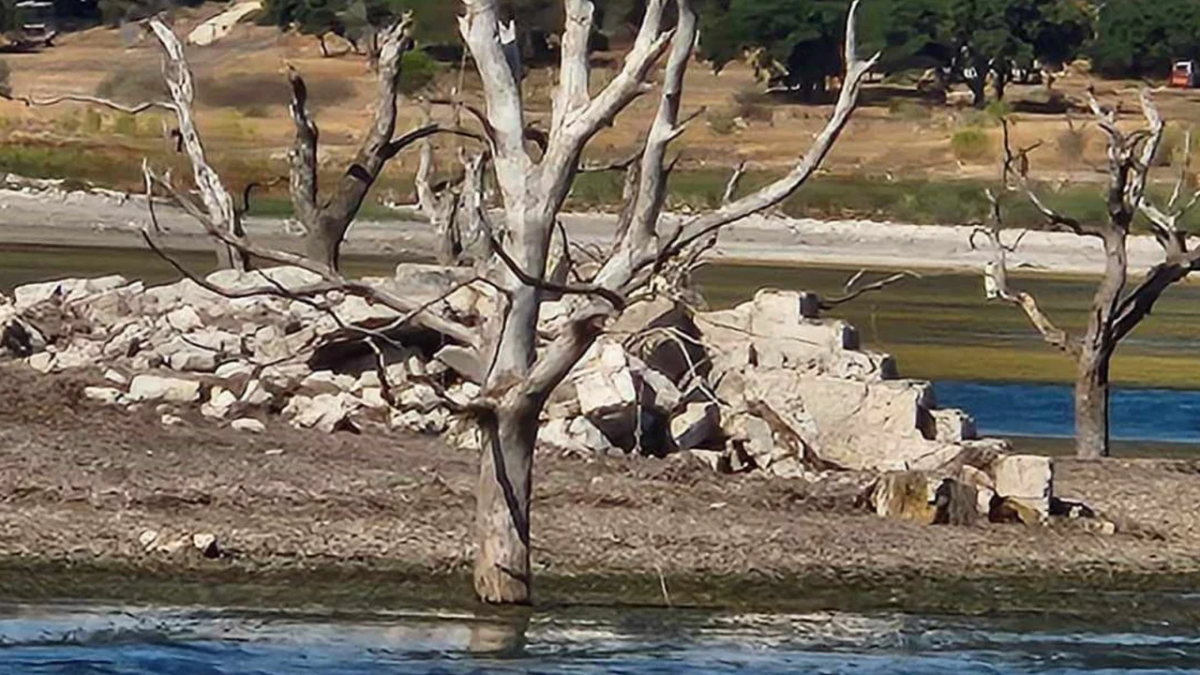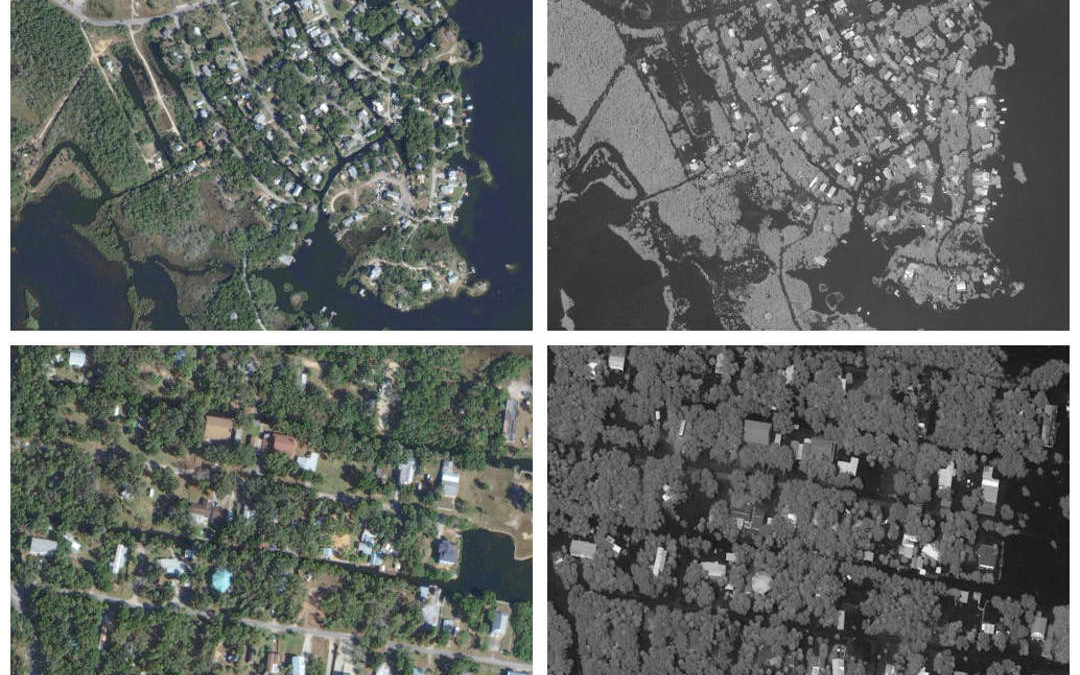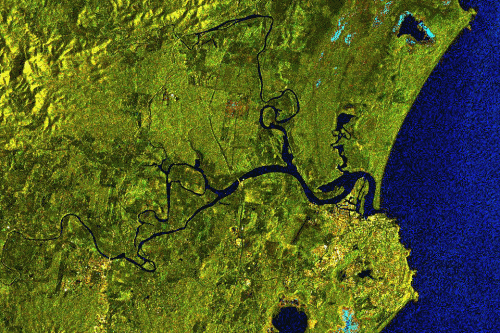Headlines for 3 September 2022 – China warns of “severe” threat to harvest after hottest summer on record – Dry pastures force Texas ranchers to slaughter ever more cows
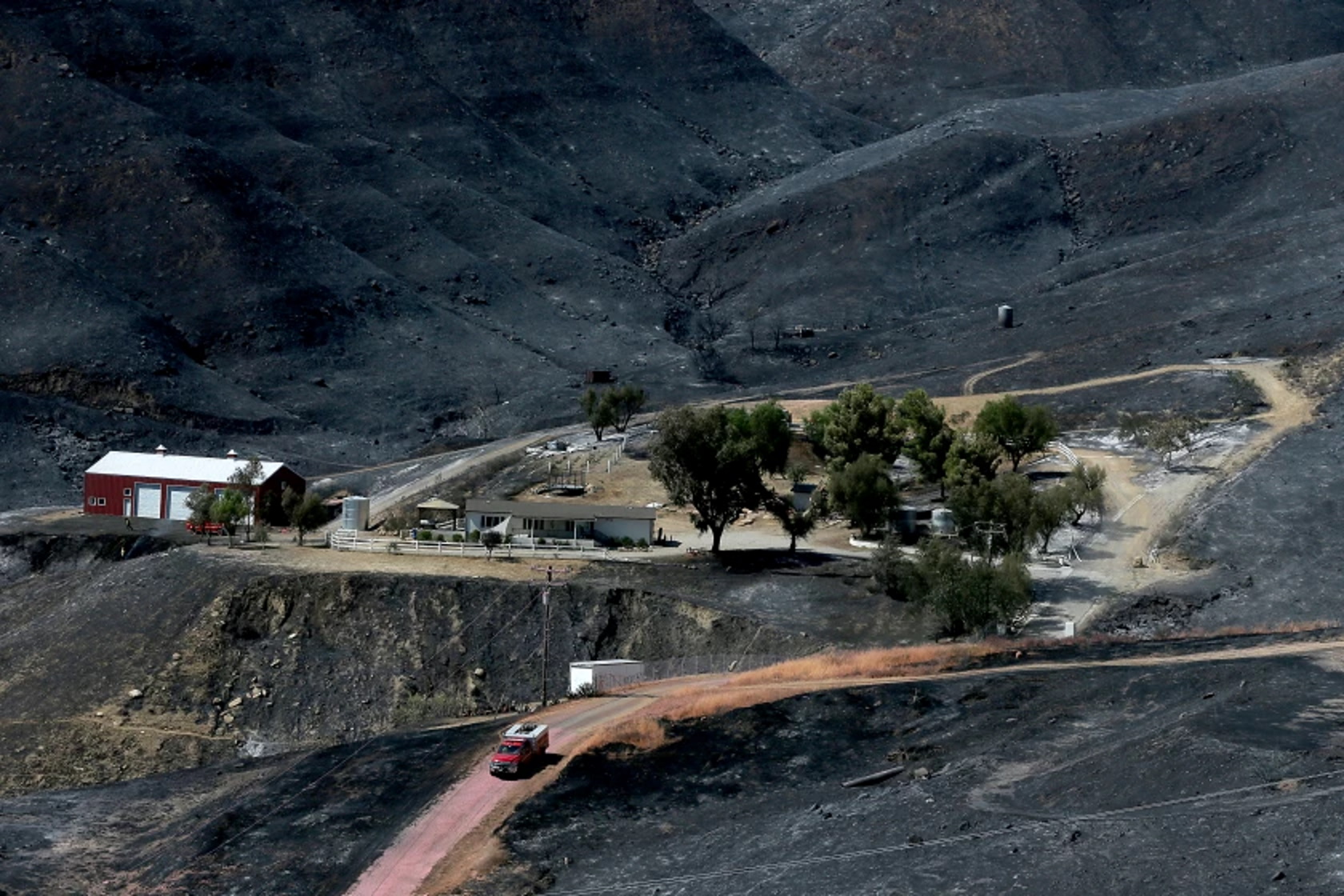
3 September 2022 (Desdemona Despair) – The terrible summer of 2022 has overwhelmed Desdemona’s ability to track the climate disasters that are multiplying around the world. There’s no reason to expect the rate of environmental catastrophe to slow, so Des has decided that automation is necessary to keep this blog relevant and current.
The idea is to continue posting individual marquee stories along with regular news roundups like this. Desdemona will continue presenting the latest scientific research in the foreground, while surfacing a background of stories that illustrate what life is like in the Anthropocene.
There are some very good third-party automation tools that looked promising, but after wrestling with them, they couldn’t do what this blog format requires, so Des wrote a bunch of code to automate some of the blogging workflow. This post is a second attempt to automate a daily (or maybe weekly) news roundup of headlines. Realistically, there’s no way to completely automate posts like this, but hopefully, the new custom code can create a post that’s 80 percent complete, requiring only minimal manual edits to make it a finished product. It’s very much a work in progress, so please bear with Des.
In this post:
- L.A. sees third day of record-setting temperatures as wildfires, outages bear down
- Heat, Water, Fire: How Climate Change Is Transforming the Pacific Crest Trail
- Record rain is hitting drought-stricken areas. That’s not good news.
- ‘All of a sudden it’s undrinkable’: why an entire US city has no clean water
- As Colorado River Dries, the U.S. Teeters on the Brink of Larger Water Crisis
- Scorching, global drought has uncovered lost artifacts around the world
- Africa drought: Some children just ‘one disease away from catastrophe’ UNICEF warns
- Drought in Africa threatens millions of children — UN
- California Wildlife Left to Rot in Baking Sun as Drought Dries Lakes
- Dry pastures force Texas ranchers to slaughter ever more cows
- Scorching, global drought has uncovered lost artifacts around the world
China heatwave and drought
- China warns of ‘severe’ threat to harvest after hottest summer on record
- Heatwave in China is the most severe ever recorded in the world
- Explainer: The power crunch in China’s Sichuan and why it matters
- China Drought Exposes Ancient Stone Island in Middle of Dry Lake
- Receding water levels of China’s Yangtze reveal ancient Buddhist statues
- Heat waves and drought cause power cuts in China
L.A. sees third day of record-setting temperatures as wildfires, outages bear down
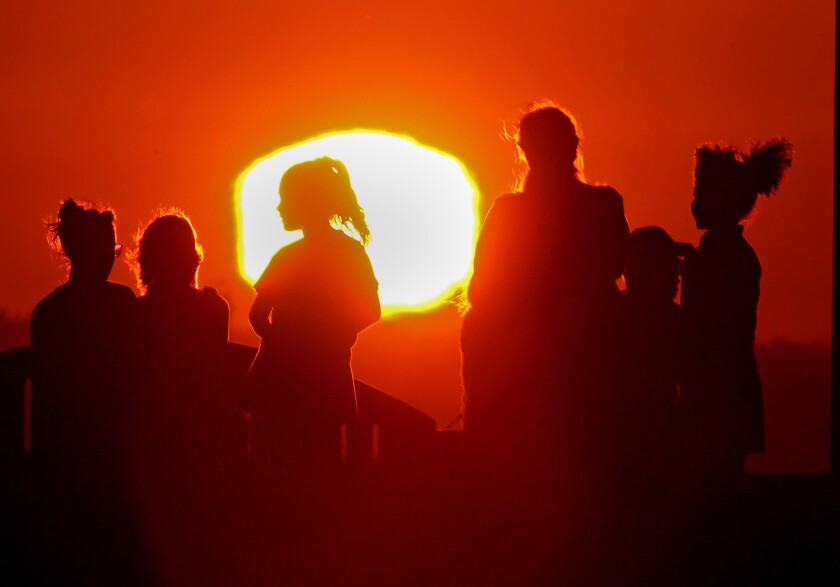
2 September 2022 (Los Angeles Times) – Southern California baked under a third day of record-setting heat as firefighters continued battling wildfires across the state and officials grappled with triple-digit temperatures that have spurred further calls for voluntary energy use reduction to avoid rolling blackouts.
The California Independent System Operator, which manages the power grid, has extended a Flex Alert into Saturday, officials announced Friday evening.
During a Flex Alert, consumers are asked to conserve energy from 4 p.m. to 9 p.m., hours when the grid is most stressed.
“Californians are strongly urged to lower electricity use by setting thermostats to 78 or higher, health permitting, avoid using major appliances, and turning off all unnecessary lights,” the officials said. “Tomorrow’s Flex Alert is the fourth consecutive call for conservation, as much of the state remains gripped in an extensive heat wave.”
The Antelope Valley saw two high temperature records broken on Friday.
Lancaster’s high of 113 degrees broke the previous daily record of 112 degrees set in 1950, said Tom Fisher, a meteorologist with the National Weather Service in Oxnard. Palmdale’s high of 110 degrees eclipsed the previous high of 109 in 1996. […]
More: L.A. sees third day of record-setting temperatures as wildfires, outages bear down
Heat, Water, Fire: How Climate Change Is Transforming the Pacific Crest Trail

31 August 2022 (The New York Times) – Thru-hikers on the Pacific Crest Trail spend up to five months walking from Mexico to Canada — and the imprint of climate change is now felt along the entire route.
The increased incidence of wildfires — which can imperil hikers, scorch the landscape and upend itineraries — is the single biggest threat.
But so, too, are weirder weather patterns, meager shade and disruptions to streams and water sources.
We sent a reporter and a photographer to document the P.C.T. in the era of climate change. Here’s what they found.
The already grueling 2,600-mile hike now includes the added challenges of global warming, which can mean a lack of shade and exposure to smoke and fire. […]
More: Heat, Water, Fire: How Climate Change Is Transforming the Pacific Crest Trail
Record rain is hitting drought-stricken areas. That’s not good news.
A warmer climate is driving precipitation to higher extremes in both flooding and drought

25 August 2022 (The Washington Post) – On Monday morning, the Dallas-Fort Worth area awoke to disaster. Rain was pouring down at the rate of 2 to 3 inches per hour. Highways became lethal lagoons, brooks became basins, and thousands of people scrambled to higher ground.
Just a day earlier, the city had been facing one of its worst droughts on record, with farmers forced to thin their herds as reservoirs rapidly shrank. Twenty-nine percent of the Lone Star State was encapsulated within a top-tier level 4 out of 4 “exceptional” drought. Very dry conditions took a heavy toll on crops and forced widespread water restrictions.
The extreme case of atmospheric caprice highlighted a growing issue plaguing communities across the United States and the world: weather whiplash.
This summer, several locations around the United States have experienced these wild, rapid swings from one weather extreme to another. About half of the country has undergone at least a moderate drought this summer. Parts of the West, the Midwest and Texas have experienced exceptional and historic drought conditions.
Then the storms came. On July 26 in St. Louis, a shocking 8.65 inches of rain fell to mark the city’s wettest day on record. The next day, in eastern Kentucky, rainfall rates topped 2 inches per hour and took the lives of 38 people. In August, eastern Illinois, Death Valley and Dallas also experienced significant or record-breaking rainfall. On Wednesday, flash flooding across central Mississippi swept away roads and prompted rescues. […]
More: Record rain is hitting drought-stricken areas. That’s not good news.
‘All of a sudden it’s undrinkable’: why an entire US city has no clean water

1 September 2022 (The Guardian) – Jackson, Mississippi, lost access to safe running water after flooding – but it’s the capstone to years of problems with race a possible factor
Thirty-year-old Kendrick Hart remembers the warning his father gave about Jackson, the capital of Mississippi, where they both still live: “They need to do something about that water before it gets bad.”
Now that moment has come.
The overwhelming majority of people – more than 150,000 – in the predominantly Black city have now lost access to safe running water. Most had already been without drinkable water for more than a month, but flooding last weekend, caused by weeks of rain, further interrupted operations at the city’s beleaguered main water plant. Currently large numbers have nothing come out of their taps, and for those that do, it must be boiled before being consumed.
The situation has raised questions about the impact of underinvestment since white families abandoned the city en masse. It also suggests how extreme flooding, exacerbated by the climate crisis, will take a toll on infrastructure.
“For the longest [time], I have been experiencing dirty water, and now we got to the point where we ain’t got no water,” said Hart, who was visiting a church on Wednesday where bottled water was being handed out. “It is like – wow. And I feel like it could have been something done a long time ago to prevent all this.” He said he knew of people with no running water who were visiting friends and family members in the adjoining majority-white cities and suburbs to take showers. […]
More: ‘All of a sudden it’s undrinkable’: why an entire US city has no clean water
As Colorado River Dries, the U.S. Teeters on the Brink of Larger Water Crisis
The megadrought gripping the western states is only part of the problem. Alternative sources of water are also imperiled, and the nation’s food along with it.

25 August 2022 (ProPublica) – The western United States is, famously, in the grips of its worst megadrought in a millennium. The Colorado River, which supplies water to more than 40 million Americans and supports food production for the rest of the country, is in imminent peril. The levels in the nation’s largest freshwater reservoir, Lake Mead, behind the Hoover Dam and a fulcrum of the Colorado River basin, have dropped to around 25% of capacity. The Bureau of Reclamation, which governs lakes Mead and Powell and water distribution for the southern end of the river, has issued an ultimatum: The seven states that draw from the Colorado must find ways to cut their consumption — by as much as 40% — or the federal government will do it for them. Last week those states failed to agree on new conservation measures by deadline. Meanwhile, next door, California, which draws from the Colorado, faces its own additional crises, with snowpack and water levels in both its reservoirs and aquifers all experiencing a steady, historic and climate-driven decline. It’s a national emergency, but not a surprise, as scientists and leaders have been warning for a generation that warming plus overuse of water in a fast-growing West would lead those states to run out.
I recently sat down with Jay Famiglietti, the executive director of the Global Institute for Water Security at the University of Saskatchewan, to talk about what comes next and what the public still doesn’t understand about water scarcity in the United States. Before moving to Canada, Famiglietti was a lead researcher at NASA’s water science program at the Jet Propulsion Laboratory in Pasadena, California, and a member of the faculty at the University of California, Irvine. He pioneered the use of the Gravity Recovery and Climate Experiment satellites to peer into the earth’s mass and measure changes in its underground water supplies. The Colorado River crisis is urgent, Famiglietti said, but the hidden, underground water crisis is even worse. We talked about what U.S. leaders either won’t acknowledge or don’t understand and about how bad things are about to get.
Our conversation has been edited for length and clarity. […]
More: As Colorado River Dries, the U.S. Teeters on the Brink of Larger Water Crisis
Scorching, global drought has uncovered lost artifacts around the world
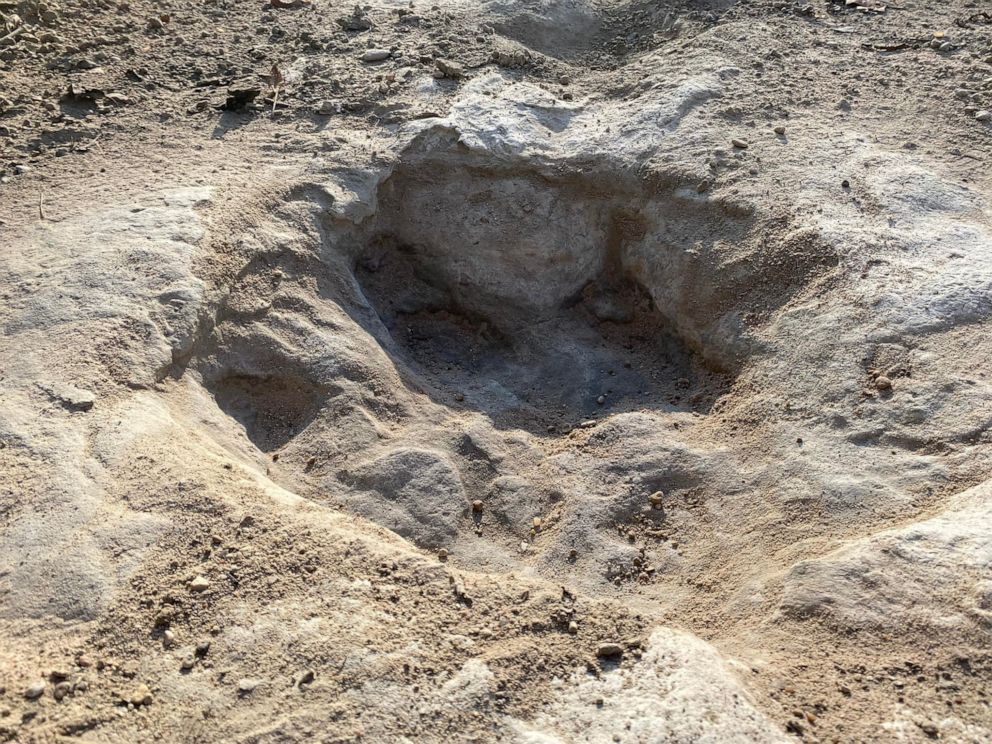
24 August 2022 (ABC News) – Sites across the world have discovered historic relics as water levels recede.
A worldwide drought has devastated communities across the globe, but it also has fascinated millions as historic artifacts have come to the surface, igniting memories from decades to centuries before.
This August, Texas’ Dinosaur Valley State Park saw rare dinosaur tracks that are usually covered by water and sediment. With the Paluxy River running through only a portion of its usual berth, tracks from Acrocanthosaurus dinosaurs have come to the light.
Jeff Davis, parks superintendent at Dinosaur Valley, told ABC News these tracks could date back millions of years. Davis added that Sauroposeidon tracks have become visible on the opposite side of the park, adding to the season’s remarkable attractions.
With heavy rainfall hitting Texas, Davis says these tracks will likely be covered by water again soon. However, that might be best for their livelihood. […]
More: Scorching, global drought has uncovered lost artifacts around the world
Africa drought: Some children just ‘one disease away from catastrophe’ UNICEF warns

23 August 2022 (UN) – On Tuesday, UN Children’s Fund UNICEF warned that children in the Horn of Africa and the vast Sahel region “could die in devastating numbers” without urgent intervention and support. In the last five months, the number of people in Ethiopia, Kenya and Somalia without reliable access to safe water, has risen from 9.5 million to 16.2 million
Children in Sahel are also facing water insecurity. This crisis has led to the proliferation of severe malnutrition and increased the risk of serious water-borne diseases.
Risks multiply
“When water either isn’t available or is unsafe, the risks to children multiply exponentially,” said UNICEF Executive Director Catherine Russell. “Across the Horn of Africa and the Sahel, millions of children are just one disease away from catastrophe.”
In Burkina Faso, Chad, Mali, Niger and Nigeria, drought, conflict and insecurity are driving the water insecurity problem, as World Water Week gets underway, in the Swedish capital, Stockholm. […]
More: Africa drought: Some children just ‘one disease away from catastrophe’ UNICEF warns
Drought in Africa threatens millions of children — UN
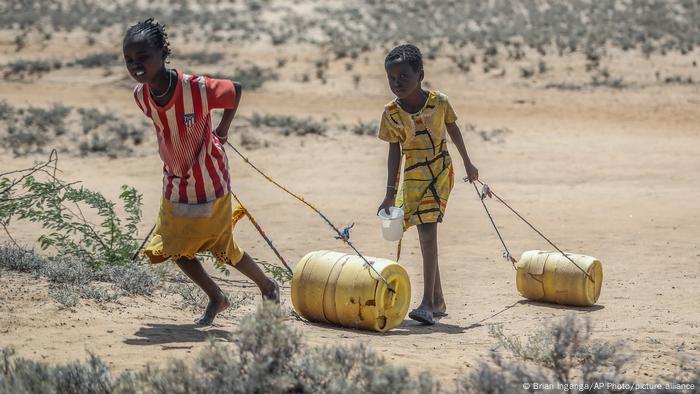
23 August 2022 (DW) – As many as 40 million children are “one disease” from catastrophe as the Horn of Africa and Sahel experience the worst drought in four decades, according to UNICEF.
UNICEF said that drought and conflict were driving up water insecurity leading to high levels of water vulnerability
The United Nations International Children’s Emergency Fund (UNICEF) has warned that children in the Horn of Africa and Sahel regions “could die in devastating numbers unless urgent support is provided.”
That’s as the number of drought-stricken people in Ethiopia, Kenya and Somalia — without access to adequate supplies of water — rose from 9.5 million to 16.2 million in the space of just five months, according to the relief agency. […]
More: Drought in Africa threatens millions of children — UN
California Wildlife Left to Rot in Baking Sun as Drought Dries Lakes

24 August 2022 (Newsweek) – Wildlife in California is reportedly being left to perish under the baking sun as the ongoing megadrought dries up lakes.
Aquatic wildlife living in two particular lakes in Bakersfield—one at River Walk Park and Truxtun Lakes, at Kern River Parkway—are being left without a home as water levels continue to recede, per KGET.
“This is the driest it’s been in 1200 years,” Richard O’Neil, president of the Kern River Parkway Foundation, told the news outlet. “This is a three-year drought but it extends beyond that. It’s one drought upon the next drought.”
All of California’s 58 counties are in a moderate to severe drought. The drought is causing an increased need for water, paired with a lack of rainfall and snowpack melting into the state’s reservoirs.
The state is also experiencing extremely hot temperatures, meaning lakes are evaporating more quickly.
The two small lakes are home to an abundance of wildlife, including turtles and birds. […]
More: California Wildlife Left to Rot in Baking Sun as Drought Dries Lakes
Dry pastures force Texas ranchers to slaughter ever more cows
/cloudfront-us-east-2.images.arcpublishing.com/reuters/WTXU3UOKJZMILGVUI3SZBJ4O44.jpg)
CROCKETT, Texas, 24 August 2022 (Reuters) – With almost all of Texas in drought, ranchers are sending ever more cattle off to slaughter, a trend likely to increase beef prices over the long term due to dwindling supply from the largest cattle region in the United States.
Since mid-July, more than 93% of Texas has been in drought, according to the United States Drought Monitor. As of mid-August, more than 26% of Texas was at the highest level, characterized by widespread loss of pastures and crops as well as water shortages.
While conditions are especially acute in Texas, about 54% of all U.S. cattle were in some form of drought as of Aug. 16, up from 36% a year earlier. Cattle slaughter is high nationwide, temporarily increasing supply but portending tighter supplies in future years. read more
Paul Craycraft, co-owner of the East Texas Livestock Auction in Crockett, said dry pastures are depriving cattle of an important food source, while making it more expensive for ranchers to supplement their herds’ diet with hay and feed.
“We’ve had I don’t how many 100-degree (38 C) days and you can see out here, you know, the grass is gone,” Craycraft said. “The cows are beginning to lose weight. The cows are weak because there’s no protein. So we’re getting rid of a lot of cows.”
Brahman cattle are seen on a ranch in Texas, U.S., April 30, 2020. REUTERS/Adrees Latif
More: Dry pastures force Texas ranchers to slaughter ever more cows
China warns of ‘severe’ threat to harvest after hottest summer on record

24 August 2022 (France24) – China’s autumn harvest is under “severe threat” from high temperatures and drought, authorities have warned, urging action to protect crops in the face of the country’s hottest summer on record.
The world’s second-largest economy has been hit by record temperatures, flash floods and droughts this summer — phenomena that scientists have warned are becoming more frequent and intense due to climate change.
Southern China has recorded its longest sustained period of high temperatures and sparse rain since records began more than 60 years ago, the agriculture ministry said. […]
More: China warns of ‘severe’ threat to harvest after hottest summer on record
Heatwave in China is the most severe ever recorded in the world
A long spell of extreme hot and dry weather is affecting energy, water supplies and food production across China

23 August 2022 (New Scientist) – Low rainfall and record-breaking heat across much of China are having widespread impacts on people, industry and farming. River and reservoir levels have fallen, factories have shut because of electricity shortages and huge areas of crops have been damaged. The situation could have worldwide repercussions, causing further disruption to supply chains and exacerbating the global food crisis.
People in large parts of China have been experiencing two months of extreme heat. Hundreds of places have reported temperatures of more than 40°C (104°F), and many records have been broken. Subway stations have set up rest areas where people can recover from the heat.
On 18 August, the temperature in Chongqing in Sichuan province reached 45°C (113°F), the highest ever recorded in China outside the desert-dominated region of Xinjiang. On 20 August, the temperature in the city didn’t fall below 34.9°C (94.8°F), the highest minimum temperature ever recorded in China in August. The maximum temperature was 43.7°C (110.7°F).
It is the longest and hottest heatwave in China since national records began in 1961. According to weather historian Maximiliano Herrera, who monitors extreme temperatures around the world, it is the most severe heatwave recorded anywhere.
“This combines the most extreme intensity with the most extreme length with an incredibly huge area all at the same time,” he says. “There is nothing in world climatic history which is even minimally comparable to what is happening in China.”
Together with the extreme heat, low rainfall in parts of China has led to rivers falling to low levels, with 66 drying up completely. In parts of the Yangtze, water levels are the lowest since records began in 1865. In a few places, local water supplies have run out and drinking water has had to be trucked in. On 19 August, China announced a national drought alert for the first time in nine years.
Hydroelectricity generation has fallen because of the low water levels. Sichuan has been especially affected because it normally gets 80 per cent of its electricity from hydropower. Thousands of factories in the province have had to cease operations because of electricity shortages amid high demand for air conditioning. Offices and shopping malls were also told to reduce lighting and air conditioning to save power.
In Sichuan alone, 47,000 hectares of crops are reported to have been lost and another 433,000 hectares damaged. The agriculture ministry has said it will try to increase rainfall by seeding clouds. It remains scientifically unclear whether cloud seeding makes a significant difference. […]
Zhong Guilin/VCG via Getty Images
Low rainfall and record-breaking heat across much of China are having widespread impacts on people, industry and farming. River and reservoir levels have fallen, factories have shut because of electricity shortages and huge areas of crops have been damaged. The situation could have worldwide repercussions, causing further disruption to supply chains and exacerbating the global food crisis. […]
More: Heatwave in China is the most severe ever recorded in the world
Explainer: The power crunch in China’s Sichuan and why it matters
/cloudfront-us-east-2.images.arcpublishing.com/reuters/VGBDQLOSHVN25E4B3OK2YLLMMA.jpg)
26 August 2022 (Reuters) – The southwestern province of Sichuan, China’s biggest hydropower producer, has seen its supply capability slump due to a long drought across the Yangtze basin, stoking fears the country could suffer another devastating power shortage.
Sichuan’s accounts for 30% of China’s total hydroelectric generation and it normally delivers a massive power surplus to the rest of the country. But it is now receiving electricity from other provinces after weeks of minimal rainfall and extreme temperatures in excess of 40 Celsius (104 Fahrenheit).
Here is what you need to know about the power crunch.
WHY IS SICHUAN SUFFERING POWER SHORTAGES?
Hydropower is the biggest source of electricity supply in Sichuan, accounting for more than 80% of total power production.
May to October is typically Sichuan’s rainy season, allowing hydropower stations to maximise output to meet peak summer demand. […]
More: Explainer: The power crunch in China’s Sichuan and why it matters
China Drought Exposes Ancient Stone Island in Middle of Dry Lake
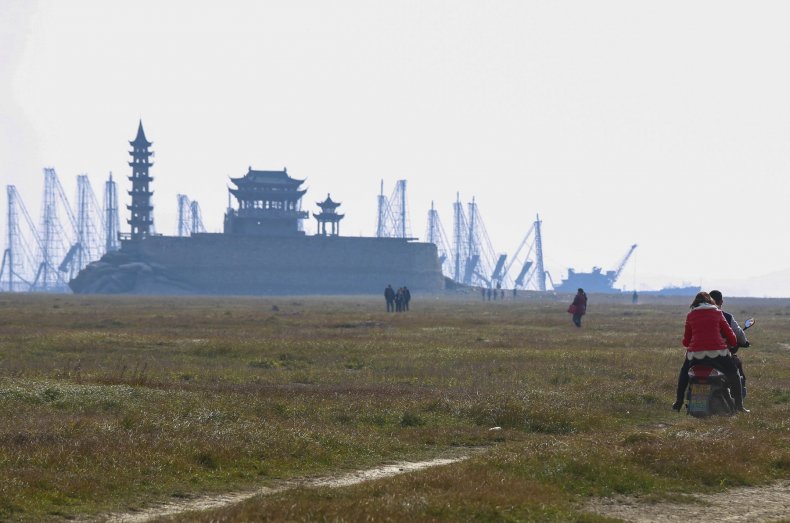
22 August 2022 (Newsweek) – Ongoing severe droughts in China have exposed an ancient island that is normally submerged in a lake.
China is experiencing a heatwave and drought this year unlike anything seen in decades, with temperatures exceeding 40 degrees Celsius in various regions across the country, according to the state-run news outlet the Global Times.
This, coupled with a lack of rain in some provincial capitals, has led to such dry conditions that China’s largest freshwater lake, Poyang Lake, appears to hardly be a body of water at all in some locations.
It’s actually common for the shallow lake, which is fed by multiple rivers, to enter a dry season which reveals the base of the historic Luoxingdun Island that’s normally partially underwater, the South China Morning Post reported. However, this year marks the earliest date in 71 years that the island can be fully seen.
Now, the 1,000-year-old island appears to be surrounded by grassland rather than water. Poyang Lake has exhibited increasingly lower water levels over time due in part to droughts as well as dams on the Yangtze river, according to the South China Morning Post.
China’s ongoing heatwave and drought conditions are not only affecting Poyang Lake this year; autumn harvests and power generation are also being tested. […]
More: China Drought Exposes Ancient Stone Island in Middle of Dry Lake
Receding water levels of China’s Yangtze reveal ancient Buddhist statues
/cloudfront-us-east-2.images.arcpublishing.com/reuters/N7EJG37CBFM4LFHES77VVBQI6A.jpg)
BEIJING, 20 August 2022 (Reuters) – Plunging water levels of the Yangtze River have revealed a submerged island in China’s southwestern city of Chongqing and a trio of Buddhist statues on it that are believed to be 600 years old, state media Xinhua has reported.
The three statues were found on the highest part of the island reef called Foyeliang, initially identified as built during the Ming and Qing dynasties. One of the statues depicts a monk sitting on a lotus pedestal.
The Yangtze’s water levels have been falling rapidly due to a drought and a heatwave in China’s southwestern region.
A once submerged Buddhist statue sits on top of Foyeliang island reef in the Yangtze river, which appeared after water levels fell due to a regional drought in Chongqing, China, August 20, 2022. REUTERS/Thomas Peter
Rainfall in the Yangtze basin has been around 45% lower than normal since July, and high temperatures are likely to persist for at least another week, official forecasts said.
As many as 66 rivers across 34 counties in Chongqing have dried up, state broadcaster CCTV said on Friday. […]
More: Receding water levels of China’s Yangtze reveal ancient Buddhist statues
Heat waves and drought cause power cuts in China
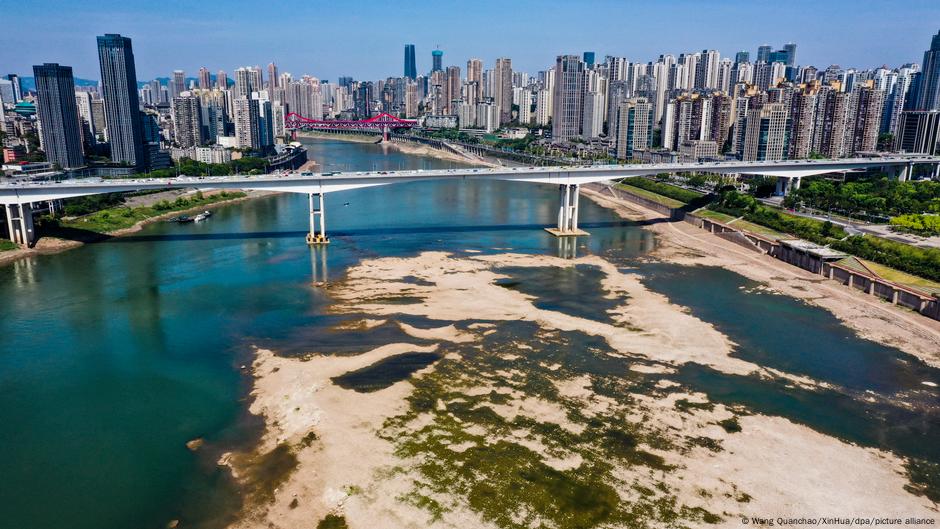
23 August 2022 (DW) – Unprecedented drought levels in the Yangtze River have increased pressure on hydroelectric power plants, which supply energy to key economic zones of the country.
Hydropower has been affected as rivers do not have enough water.
Some 1,500 people have been forced to evacuate due to brush fires in China, as the region goes through record heat and drought.
Around 5,000 civilian and military personnel have been mobilized to put out the blazes, said Xinhua News Agency on Monday. Helicopters had been deployed to pour water over the fires, in addition to ground crew. […]
